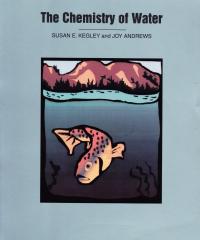The Chemistry of Water
The Chemistry of Water
By: Susan E. Kegley, Joy Andrews
This introductory laboratory manual will help students design a sampling plan, understand the instrumental and analytical techniques used for the assessment of water quality, learn how to interpret data and use statistical analyses, and apply scientific reasoning to an environmental problem.
For all sales outside of the United States, please contact Felicity Henson, fhenson@aip.org
Title information
This introductory laboratory manual will help students design a sampling plan, understand the instrumental and analytical techniques used for the assessment of water quality, learn how to interpret data and use statistical analyses, and apply scientific reasoning to an environmental problem. Ideal for use in the laboratory portion of an introductory environmental chemistry or general chemistry course, the manual provides substantial background information about water chemistry and gives the instructor a choice of procedures for each analysis, from instrument-intensive techniques to those requiring nothing more than a buret and a few chemicals.
1. Water Quality
2. Sampling
3. Field Measurements
4. Acids and Bases
5. Anions in Natural Waters
6. Ion Chromatography
7. Cations in Natural Waters
8. Atomic Absorption Spectrophotometry
9. Data Analysis
Appendix A: Ionic Substances in Natural Waters
Appendix B: Dilutions
Appendix C: Using Microsoft Excel for Data Analysis
Index
|
“This is a delightful book for which the authors need congratulation…At only US$22 for 166 pages it is a real bargain and should find a place on both students’ and graduates’ book shelves alike.” “This module offers an interesting and fun collection of experiments with information that is well documented for both the instructor and the students.” “The Chemistry of Water is a super book. It is more than a textbook, more than a lab manual. There is a great amount of good chemistry packed into its 160 pages…The multiple techniques presented are a gold mine. This presentation makes the module useful to first-year general chemistry students, environmental chemistry students, and upper-level chemistry students. The level is such that a high school chemistry class could successfully use the module. The Chemistry of Water is a great tool to teach quality chemistry that also shows the practical use of chemical knowledge.” “This complete and professionally prepared series of modules will form the basis for a high-quality laboratory course in Environmental Chemistry. The attention to detail and the level of the material should provide an excellent education for students who are entering this field.” |

